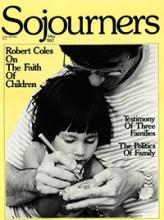The nuclear freeze campaign began less than two years ago as an attempt to give the peace movement a concrete, attainable political goal that would also be a genuine first step toward the abolition of nuclear weapons. The people who conceived the freeze campaign hoped that in the vacuum created by the failure of SALT II and the Reagan administration's total disinterest in arms control a popular initiative backed by solid local organizing could emerge that would change the whole framework of the nuclear weapons debate. A timeline and general strategy was developed that called for beginning the freeze campaign locally and taking it to Congress only after hometown support had been organized and sufficient national momentum generated.
As the headlines of the last two months attest, the strategy is working. The freeze campaign has, at least for now, set the terms for public discussion of nuclear disarmament. And rather than the freeze campaign going to Congress, Congress has come to the freeze campaign.
The momentum in Congress began after the February holiday recess when many congresspeople found themselves bombarded with questions from their constituents about nuclear arms control and the freeze. In Massachusetts pressure was so great that Edward Kennedy saw a bandwagon in the making and jumped on board by introducing, with Mark Hatfield of Oregon, a non-binding resolution that incorporated the language of the freeze campaign's "Call to Halt the Nuclear Arms Race." The resolution has already enlisted 19 co-sponsors in the Senate and 150 in the House.
The freeze campaign has made nuclear weapons a front-burner political issue that the Reagan administration cannot ignore. The response of Reagan and his allies has proceeded on two simultaneous though contradictory tracks.
Read the Full Article

